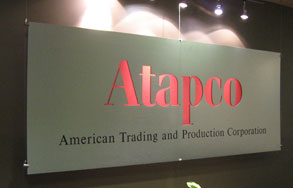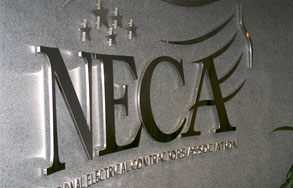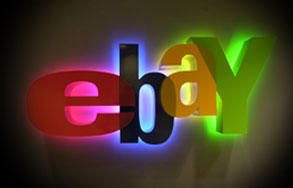Designing a Great 3D Sign By 3D Signs & Lobby Logos

Designing a Great 3D Sign
These days, the word "3D" generally invokes stereo image projection that lets bad movies get uncomfortably close to your face. Along those lines, the term "3D Signs" may bring to mind sci-fi images of holographic store signs, virtual shop attendants and Princess Leia's entreaty to Obi-Wan Kenobi.
What are 3D Signs?
The truth is somewhat more prosaic; however, the technology behind modern 3D Sign making is, if anything, even more exciting in its potential, because it lets the creativity of human designers be fulfilled through ultra-precise computer-controlled manufacturing tools.
"3D sign" is the industry term for the type of signage that features dimensional, carved or cut shapes and text, as opposed to 2-dimensional signs that display images or text printed on a flat surface. Put the two side by side, and the difference is clear: a 3-dimensional sign has better visibility, provides a more engaging view for the human eye, can be lit in interesting ways, and generally indicates success, competence and professionalism.
The design and fabrication of a 3D sign is a task that rewards patience, experience and knowledge; however, in recent years, a number of technological innovations have practically revolutionized the process, making it far quicker and more intuitive.
The ultimate machine tool for quick and precise sign fabrication is the CNC router. Most of us are familiar with internet routers, but it's also the name of a power tool used in carving and woodworking. A router is a device that slides across the surface of the workpiece like a floor sander, and has a downward-pointing spindle that drills or grinds the workpiece in the desired ways.
Non-computerized powered routers have existed for decades; the worker holds and manually guides the router along the contours of a design template, carving the design into the workpiece. However, with the advent of computer-controlled machining, the human worker is no longer needed: a CNC (Computer Numerical Control) router can receive carving instructions straight from the designer's computer, and will guide the routing bit over the workpiece automatically on perpendicular rails, carving the design with exceptional precision and speed.
3D Drafting & G-Code
First, the designer creates a digital 3D model in AutoCAD or any other drafting program. After this, the design must be transformed into a format that the CNC machine can understand. This format is called G-Code, short for General Code, and it is a series of direct instructions that tell the machine how to cut, what shape to cut in, to what depth, etc. This code can technically be written by hand; however, this is very hard to do for any but the simplest contours, which is why sign makers need special software to convert 3D models into G-Code. There is a variety of such software available, at various price points (including free and open source, so if you're thinking of building your own CNC router, don't worry about being forced to shell out hundreds of dollars for a software license).
When the G-Code is sent to the router, it begins the carving process. But wait... even if the carving is automatic, won't the attending worker still need to be present in order to change the router's tool if a single project requires two or more different attachments? Yes... unless the router comes with an Automatic Tool Changer, which is absolutely something that exists. Routers with that capability will run a bit pricier than the manual tool change models, but for many 3D sign makers, this expense is completely justified in light of the saved time and effort.
Mounting 3D Sign Elements
After the cutting is done, some signs - ones that were made in one piece - are ready to be mounted as they are; however, many if not most 3D signs incorporate free-standing letters, as well as shapes and other ornaments. When a project has a number of distinct pieces, the sign maker needs to assemble them into the sign's final shape. This is done by gluing and/or screwing the pieces to a solid backing or a lighter frame. Letters can also be mounted individually on rods that go into the wall, for a low-impact, "floating" look.
Then comes painting, decoration and weather- and UV-proofing.
Lastly, many 3D signs also incorporate special lighting solutions, such as fluorescent or LED lights on the back-side of the sign, where they end up casting light on the wall behind it and bringing the opaque sign itself into vivid relief. This wiring work needs to be done extremely carefully, especially for signs that will be exposed to the elements.
Hire the Pros to get your 3D Sign Designed
3D signs are a great way for any establishment to show its best face to all your visitors, and with modern CNC manufacturing techniques, you can have a sign that is unique, ornate and sharp-looking - the only limit is your imagination and the talents of the sign company you work with!


